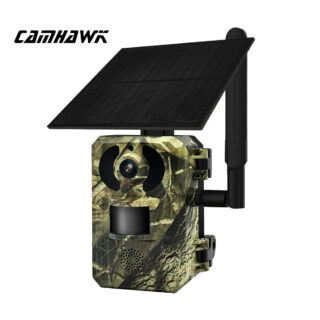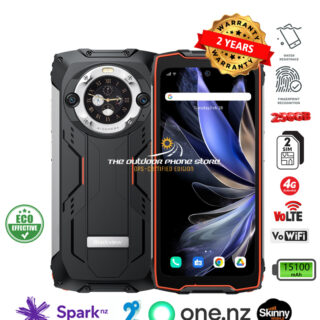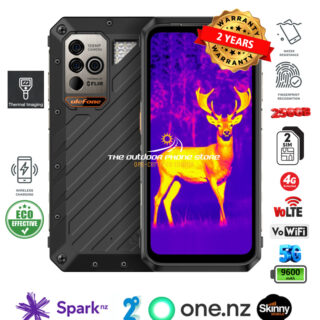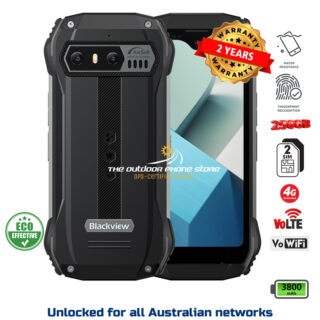Category
- Uncategorized
- Fiji Phones
- Rarotonga Phones
- Rugged Phones Australia
- Samoa Phones
- UK and Europe Phones
- USA Phones
- Useful Stuff medical
- view our Outdoor Phone Store
- 4G Extended VoLTE
- 5G phones
- Accessories
- AGM parts
- Brand: AGM Phones NZ
- Brand: Blackview Phones NZ
- Brand: Conquest Phones NZ
- Brand: Doogee Phones NZ
- Brand: Ulefone Phones
- Brand: Unihertz Phones
- handsets for 2Degrees
- handsets for Spark
- handsets for Vodafone
- rugged phones for teenagers
- Samsung Accessories
- Security & Surveillance
- Smartwatches
- Specs: Big Battery
- Specs: Dock Charging option
- Specs: Extra-Loud Speaker
- Specs: Intrinsically Safe
- Specs: Thermal Imaging
- Specs: Wireless Charging option
- Trade Phones
- view Rugged waterproof phones
WARNING: Beware of Cowboys selling “cheap” rugged phones

Some big rugged phones sites and TradeMe sellers are trying to flog-off phones that don’t work in rural areas, and which may not work anywhere once Vodafone and Spark switch off the 3G cellsites next year – and they’re lying to their customers about it, still promising “compatible with all NZ 3G/4G networks”.
To help you avoid being stung, we’ve compiled a database of all rugged phones and whether they are really compatible. Read more at the links
Rugged: what does it mean?
I’m buying a rugged phone, how tough and waterproof is it?
When you purchase one of our rugged phones, you are buying one of the toughest phones in the world. They are IP68 waterproof, US MIL-STD 810G shock tested, and IP69K dustproof. You can’t buy a Galaxy or iPhone with those strengths.
If you currently have an ordinary smartphone you might have it in a so-called ‘lifeproof’ case. As you might have discovered, ordinary phones can fall out of these cases. Many of our tradie clients report smashing ordinary $900 phones up to four times a year.
That’s expensive, so purchasing an outdoor phone could save you hundreds or even thousands of dollars, even if it only lasts six months instead of three months. Anything that can reduce your costs overall is putting money back in your pocket.
When Apple launched the iPhone X last year they called it their most ‘unbreakable’ phone, but as NBC news reported that didn’t last long:
“The phone failed the first face-down drop test: The glass shattered, the display was unresponsive and the Face ID didn’t work. Another X stopped working when it was dropped on its side. The 60-second tumble test resulted in shattered and splintered glass, and the failure of the home swipe and Face ID.
“It may be the toughest glass Apple has ever come up with, but when a glass phone falls on a sidewalk it’s going to crack,” Jason Siciliano, SquareTrade vice president, told NBC News. “Nobody’s solved that problem.”
A genuine rugged outdoor phone is built in a tough housing that it can’t fall out of, so that protects it more in a drop. The housings are more shock absorbent and they reduce the amount of reverberation reaching the glass screen, which reduces the risk of breakage. On average, about one in a hundred of our customers end up breaking their screens. Remember, most of our clients are harder on their phones than the average bear, and if we were selling standard smartphones as “rugged” the screen fracture rate would not be 1%…it would be closer to 70%!
Here’s one of our tough phones in this video. The test begins with a superheated ball-bearing placed on the screen. The phone ultimately breaks in exactly that spot, but not before enduring immense punishment that most of us would never expose a phone to. Have a look for yourself:
Purchase link: Blackview BV9500
Is a rugged phone unbreakable?
No, it’s not a million dollar aircraft black box. If you think you can buy an invincible phone for a few hundred dollars think again. It’s an ordinary smartphone encased in a tougher shell than a sleek and glassy iPhone or Galaxy, and it is definitely tougher than an ordinary phone – drop for drop – as this comparison between a rugged phone and then an iPhone X and Galaxy S8 shows:
However, even though the rugged phone is tough, it is NOT unbreakable, it is still a computer made of ordinary computer parts and dropping it can break components inside even if the screen stays intact. Additionally, the strength comes from the rigid protective frame, so if your screen takes heavy pressure directly – for example standing on it with your heel – it can be crushed.
Rugged phones are also heavier, which means a drop from waist height is generating as much kinetic energy as dropping your iPhone from shoulder height, but your outdoor phone has some protective advantages.
Firstly, its thickness means it is less likely to ripple and flex when it hits the ground. Often it is the ripple that shatters the glass…just have a look at this slow-mo footage here:
Yes, your rugged phone is chunkier than your slim Galaxy, but that chunkiness also means your glass is less likely to smash.
Secondly, rugged phones try and set a rim around the screen so that if your phone drops face down onto a flat surface the glass doesn’t actually touch the ground. This reduces the risk of screen breakage as well because the glass doesn’t take a direct hit.
But I’ve seen pictures of rugged phones with broken screens, what went wrong?
Glass is glass. If you bang it hard enough, or it lands directly on a rock or protruding object, there’s a good chance your glass will break. There is nothing magical about the glass in your $800 rugged phone compared to an $800 ordinary phone…all manufacturers are using the toughest glass they can but if your phone lands face down on gravel the outcome will probably be the same. It is the overall design of a rugged phone that reduces breakage, not super-duper-unbreakable-glass!
The other thing about glass is that it is like a diamond. EVERY glass screen ever made has hidden “flaws” generated in the heat of the manufacturing process. Those flaws can’t be seen and depending where they are they can be a weak spot. That’s why two identical phones can be dropped the same way from the same height, and one shatters while the other doesn’t. Dropped a different way, the fall might have shattered the second screen instead of the first one.
Additionally, every time you drop your phone you are creating tiny “flaws” yourself inside the screen, so every drop you survive brings your phone one step closer to shattering.
Glass obeys the laws of physics
There are so many variables in the way your phone falls to the ground that it is impossible to factor all the risks in. If a phone falls flat on its back for example, its kinetic energy is spread through the wider surface area reducing the concentration of force. But if your phone falls on one corner first, ALL the energy of the entire drop is focused in that one spot.
A University of Auckland physicist explained how this worked when a panel fell from the side of a building into a busy city street.
“Anyone standing underneath would have sustained serious injuries even if it hit face-on – the best-case scenario, as that would spread the impact.
“The pressure would be about the same as for a small car (1000kg) running into a wall at about 20km/h,” he told the Herald.
“Not too bad for the car but you don’t want to be caught between it and the wall.”
“If it had hit edge-on, it could have impacted at 10 times that pressure – like a small piece of a car hitting you at 200km/h, he said.
Are broken screens repairable?
In most cases yes. However some hermetically-sealed phones lose their factory-grade waterproofing when their screens are replaced.
Your videos show phones taking incredible punishment
Yes, and many of the videos are from Youtube channels who deliberately set out to break tough phones so those destruction tests are real. We don’t recommend subjecting your phone to these tests, any more than 4WD vehicle manufacturers recommend driving your car up a mountainside at speed like they do in the TV ads! The BV9600 Pro dropped 10 metres from an overbridge was a genuine droptest…but eventually they managed to kill that phone by blowing it up several times. You could however drop your 9600 Pro from your pocket where it lands face down on a stone and – hey presto – the glass smashes. That doesn’t mean you bought a dud, it just means you found the Achilles’ heel of all phones – a direct whack to the glass from an object that is harder than glass.
Any drop that your phone can walk away from (figuratively speaking) still working is a win, but remember that drops are like Russian roulette: sooner or later the phone will bite the bullet in the right circumstances.
IP68 Waterproofing: what does this mean?
The IP68 rating requires a phone to withstand water for 30 minutes at a depth of 1.5 metres or less. The test is taken in still water, so it measures water pressure. The 1.5m depth is equivalent to a pressure on the case seals of around 2psi.
If the phone goes deeper, the water pressure will increase and the phone will start to leak. Likewise, if the water is shallower but flowing (like a tap, a hose, or a river or a waterfall) the pressure may exceed 2psi and the phone may leak. If you are swimming with the phone you are creating extra water pressure – be conscious of the phone’s limits.
Water, dirt and dust: Any Special Requirements?
There are two kinds of waterproofing.
One is rubber seals to close off non-waterproof ports. If these are not properly sealed your phone will drown or get dirt/dust inside. Over time, wear and tear and sunlight can weaken these seals. Inspect regularly and if in doubt don’t submerge.
Two is actual waterproof ports. These are open to water and don’t rely on keeping rubber flaps shut. They are sealed inside. However, the charging plates can corrode if exposed to salt or chlorinated water or other chemicals. If you choose to use the phone in seawater or a swimming pool, or it falls in mud, always ensure the ports are gently rinsed (without exceeding water pressure) in clean fresh water, and thoroughly allowed to dry before attempting to charge the phone. Failure to follow these commonsense requirements may result in damage to your phone, or even a fire risk from charging a wet phone.
If you can see grime in the charging port of your phone, DO NOT use a tool to scrape it out or you could damage the charging plates and cause a fire. Instead, place a few drops of isopropyl cleaning alcohol inside the port and try to dissolve the grime. The isopropyl will evaporate quite quickly.
Can I get accident insurance for my new mobile phone?
Sure. Your home and contents policy probably covers your phone, or you can purchase an Omnitech policy. Alternatively choose the $99 Outdoor Phone Store “No Questions” Accidental Damage Cover at the time of purchase or within 28 days thereafter. If purchased, and upon relinquishment of the accident-damaged phone to us, our policy entitles you to one new replacement phone of the same value within the first twelve months, subject to a policy excess payable by the customer at the following rates:
On phones priced under $399: excess of $150 plus $30 airfreight
On phones priced between $399 and $599: excess of $250 plus $30 airfreight
On phones priced between $600 and $1099: excess of $350 plus $30 airfreight
On phones priced between $1100 and $1899: excess of $800 plus $30 airfreight
[Note: for our most expensive phones, your existing home and contents cover may be your cheapest insurance choice, although the purchase of our $99 policy will give you a backup option if your insurer declines cover or writes down the insured value of the phone]
One final thing..
If you work in engineering or around machinery, iron-filings and welding equipment can damage any phone, including your new rugged phone. Watch this for useful tips:





